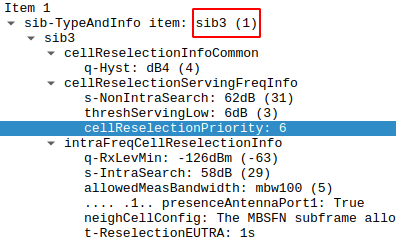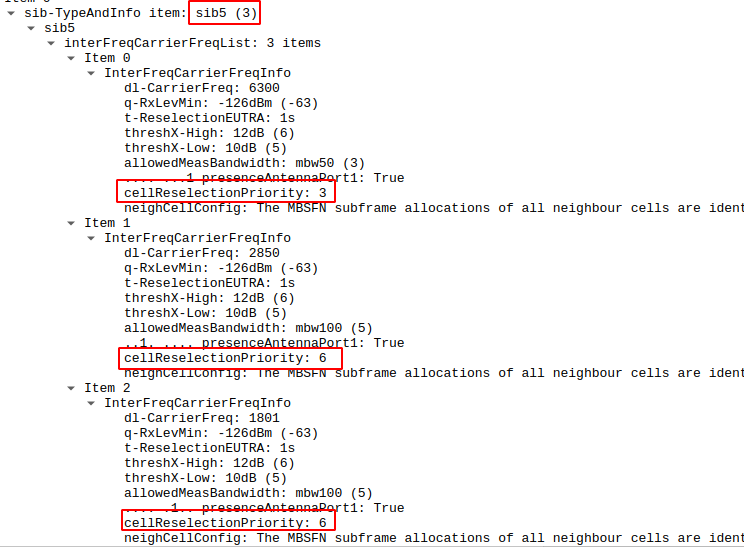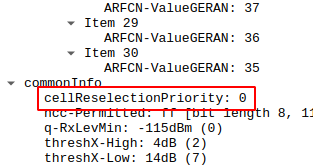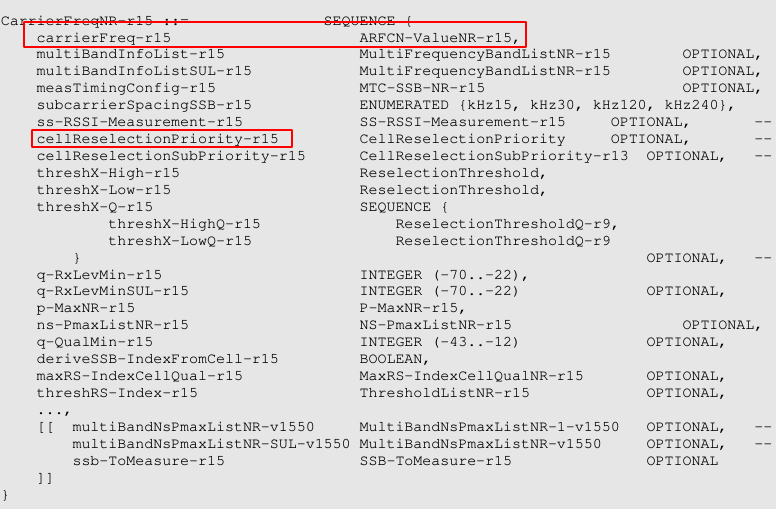At the moment, 5G networks in Europe are typically based on the Non-Standalone Architecture (NSA). This means that the LTE radio network and the LTE core network is used as the anchor for a connection, and 5G is added as a speed-booster when available. In the future, however, network operators will also roll out 5G SA, where the 5G radio network and the 5G core network will become the anchor for a connection. At this point, both SA and NSA will be on-air, and I was wondering how a mobile device in RRC-Idle state can be instructed which one to prefer.
It turns out this can be done in the same way as a mobile device is instructed today which radio technology or which LTE frequency band to prefer while in RRC-Idle state. This information is contained in System Information Broadcast (SIB) messages 3, 5, 6 and 7.

In SIB-3, the cell reselection priority of the current cell is given to the mobile device. In the example screenshot on the left, the priority of the current cell, which happens to be on band 3, 1800 MHz (not shown in the screenshot), is set to 6. The higher the value, the higher the priority. The mobile device can then compare this priority to the priorities of other LTE frequency bands that are described in SIB-5. The example below shows such a message. Here, the priority of dl-CarrierFrequency 6300 (band 20, 800 MHz) is set to 3, while the priority for eARFCN 2850 (band 7, 2600 MHz) and eARFCN 1801 (band 3, 1800 MHz) are both set to 6. That means, that the 1800 MHz and 2600 MHz bands have the same priority while the 800 MHz band has a lower priority. That makes sense, as network operators usually want mobile devices to use the higher bands, as more spectrum and respectively more capacity is available there.

Next, there’s SIB-6 that gives the priority (and other parameters) for UMTS cells in the area. In the example network, the priority is set to 1. This means that the mobile device should only consider going there if it runs out of LTE coverage, as even the 800 MHz LTE band has a higher priority.

And finally, there’s SIB-7 that does the same for GSM (=GERAN). In the example screenshot, the priority for GSM is set to 0. In other words, that’s the network of last resort.
So let’s get back to the original question how the mobile device can choose between NSA and SA in RRC-Idle state. It turns out that this works in the same way, and the priority for 5G SA is contained in SIB-24. I haven’t come across a SIB-24 message in a live network yet, but 3GPP TS 36.331 (Chapter 6.3.1) shows how it will look like. Here’s the interesting part of SIB-24:

This way, the network can, for example, set the priority in SIB-24 to a lower value than one or more LTE bands to make the device stay on LTE/5G NSA if such LTE cells are found. Or the network can broadcast a higher priority in SIB-24 than for all other radio technologies and bands, so 5G SA will be preferred over LTE. So a long story short: The same procedure as every year, James 🙂